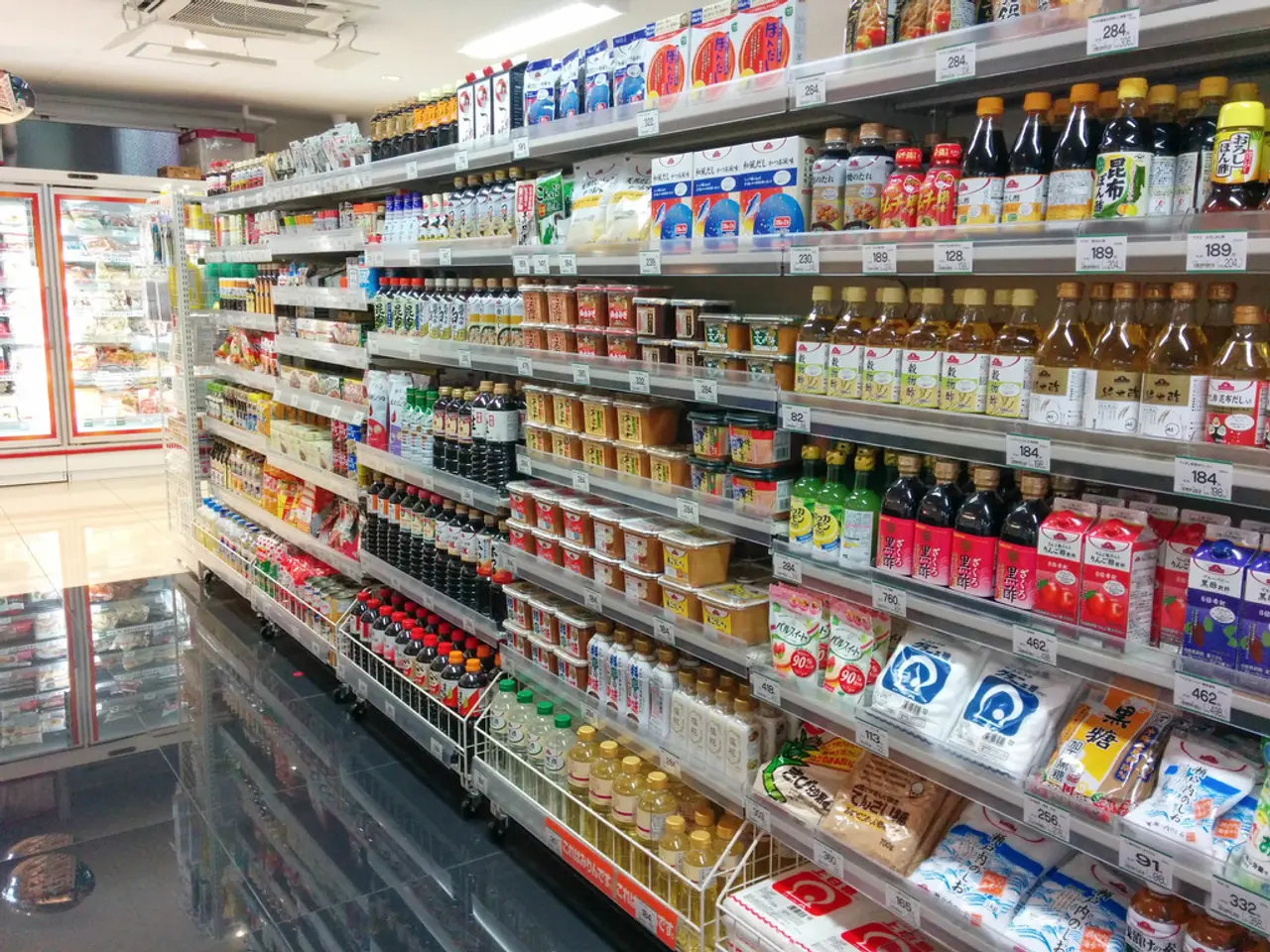Reform of electricity tariffs in Malaysia enables businesses to accurately assess the actual costs associated with fossil fuels, asserts Energy Commission leader.
In a significant move towards transparency and sustainability, the new electricity tariff mechanism in Peninsular Malaysia, set to take effect from July 2025, will impact heavy energy users such as data centres [1][5]. The new mechanism separates energy, capacity, network, and retail charges, and introduces an Automatic Fuel Adjustment (AFA) scheme.
For data centres, which are significant electricity consumers, especially AI data centres with spikes in energy use during machine learning processes, this means potentially higher electricity costs tied directly to fossil fuel price fluctuations. About 70% of generation costs come from fossil fuels, and the new tariff can lead to increased costs for ultra-high voltage users like them [1][5].
However, this change also incentivizes a shift towards clean energy investments such as solar and battery storage. By clarifying cost components and enabling more strategic energy portfolio decisions, data centres can now better manage their long-term costs and sustainability goals [1][5].
The tariff reform also replaces classification by economic activity with classification based on connection voltage levels for non-domestic users, adding further granularity and fairness in pricing structures [3]. This supports Malaysia’s broader energy transition agenda by promoting energy efficiency and smarter energy consumption among heavy users [3].
The Malaysian government has tabled several policies in recent years to improve corporate access to renewable energy. For instance, the Energy Commission of Peninsular Malaysia is engaging with data centre companies to understand their energy needs [6]. Furthermore, under the Transitioning Industrial Cluster initiative, MyDigital, a government agency, is working with organisations to reduce carbon emissions in Bintulu, Sarawak [7].
The AFA scheme reflects changes in the market price of fuel and foreign currency exchange rates on a monthly basis. Under the new tariff structure, data centres, categorised as "ultra-high voltage", face an expected 15% increase in energy costs [1].
The Malaysian Investment Development Authority (MIDA) will serve as the focal point for all applications of new data centre projects and expansions [2]. The use of electric vehicles (EVs) is reshaping the demand profile of Malaysia's electricity grid, and the government is also in the process of crafting the Asean Sustainable Data Centre Guide to tackle emissions at an industrial level [4].
In conclusion, the new electricity tariff mechanism in Peninsular Malaysia will provide data centres with a clearer, itemized breakdown of their fossil fuel-related electricity expenses, empowering them to make more informed decisions about investing in clean energy alternatives to manage long-term costs and sustainability goals.
[1] The Edge Markets (2022, September 28). Malaysia to introduce new electricity tariff mechanism for data centres in 2025. Retrieved from https://www.theedgemarkets.com/article/malaysia-introduce-new-electricity-tariff-mechanism-data-centres-2025 [2] Bernama (2022, September 28). MIDA to be focal point for new data centre projects, expansions in Malaysia. Retrieved from https://www.malaysiakini.com/news/652512 [3] The Star Online (2022, September 28). New electricity tariff mechanism to promote energy efficiency. Retrieved from https://www.thestar.com.my/news/nation/2022/09/28/new-electricity-tariff-mechanism-to-promote-energy-efficiency [4] The Malaysian Reserve (2022, September 28). Malaysia to craft Asean sustainable data centre guide. Retrieved from https://www.themalaysianreserve.com/2022/09/28/malaysia-to-craft-asean-sustainable-data-centre-guide/ [5] The Malaysian Reserve (2022, September 28). Malaysia to introduce new electricity tariff mechanism for data centres in 2025. Retrieved from https://www.themalaysianreserve.com/2022/09/28/malaysia-to-introduce-new-electricity-tariff-mechanism-for-data-centres-in-2025/ [6] The Malaysian Reserve (2022, September 28). Energy Commission engages data centre companies on energy needs. Retrieved from https://www.themalaysianreserve.com/2022/09/28/energy-commission-engages-data-centre-companies-on-energy-needs/ [7] The Malaysian Reserve (2022, September 28). MyDigital spearheads carbon emissions reduction in Bintulu. Retrieved from https://www.themalaysianreserve.com/2022/09/28/mydigital-spearheads-carbon-emissions-reduction-in-bintulu/
- The new electricity tariff mechanism in Peninsular Malaysia, set to take effect in 2025, will give data centres a clear breakdown of their fossil fuel-related expenses, enabling them to consider clean energy investments like solar and battery storage.
- By clarifying cost components and introducing an Automatic Fuel Adjustment (AFA) scheme, the new tariff structure can lead to increased costs for data centres categorised as "ultra-high voltage" users, but it also provides an impetus for these heavy energy users to make strategic energy portfolio decisions that align with their long-term costs and sustainability goals.
- Malaysia's broader energy transition agenda is further supported by the tariff reform, which promotes energy efficiency and smart energy consumption among heavy users by replacing classification by economic activity with classification based on connection voltage levels for non-domestic users.
- Recognizing the potential of data centres to contribute to the carbon footprint, the Malaysian government has tabled policies to improve corporate access to renewable energy, such as engaging with data centre companies to understand their energy needs and working with organisations to reduce carbon emissions in industrial clusters like Bintulu, Sarawak.
- In line with the energy transition, the Malaysian government is also proactively addressing the emissions at an industrial level by crafting the Asean Sustainable Data Centre Guide and supporting the use of electric vehicles (EVs), reshaping the demand profile of Malaysia's electricity grid.




